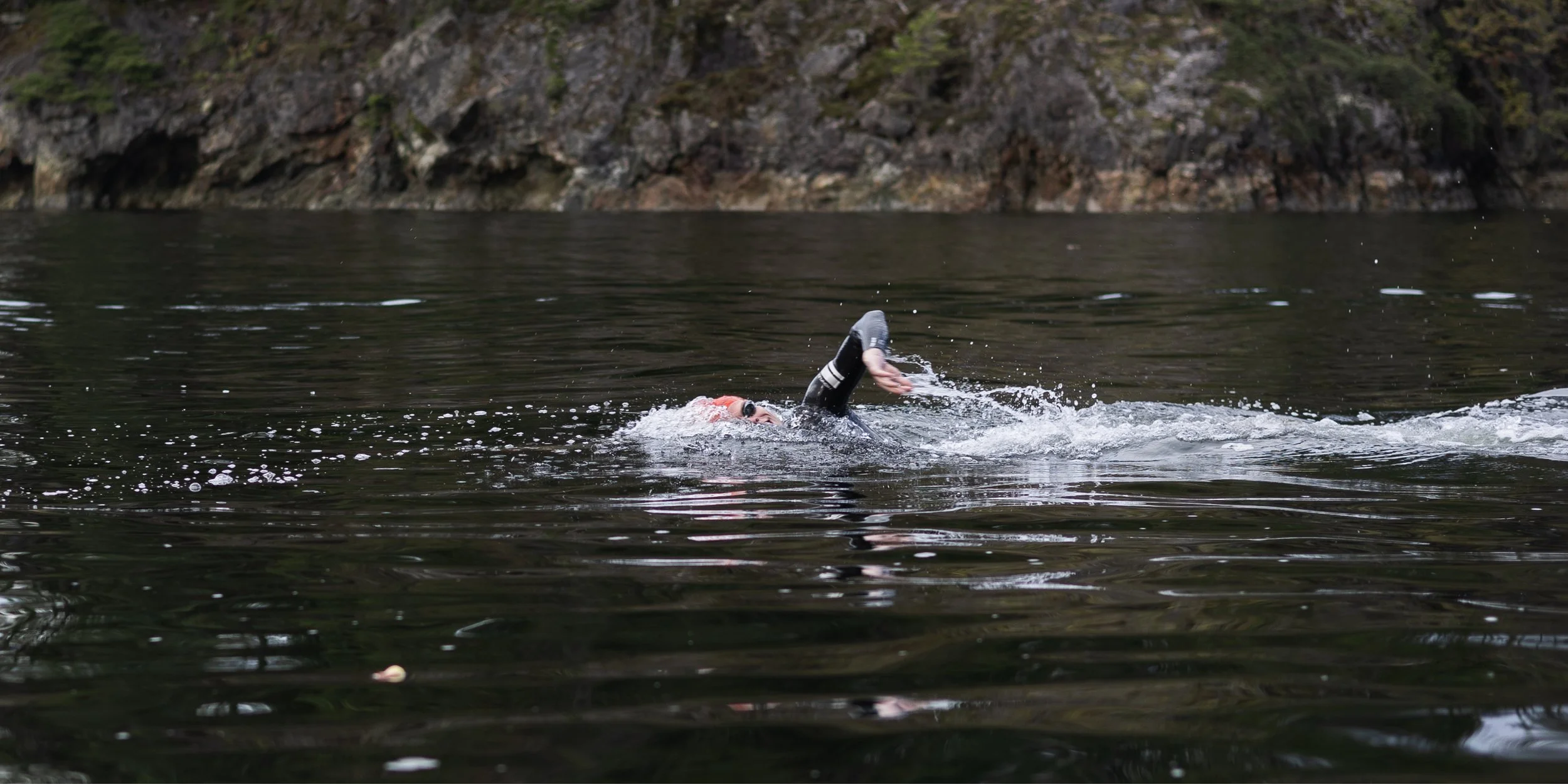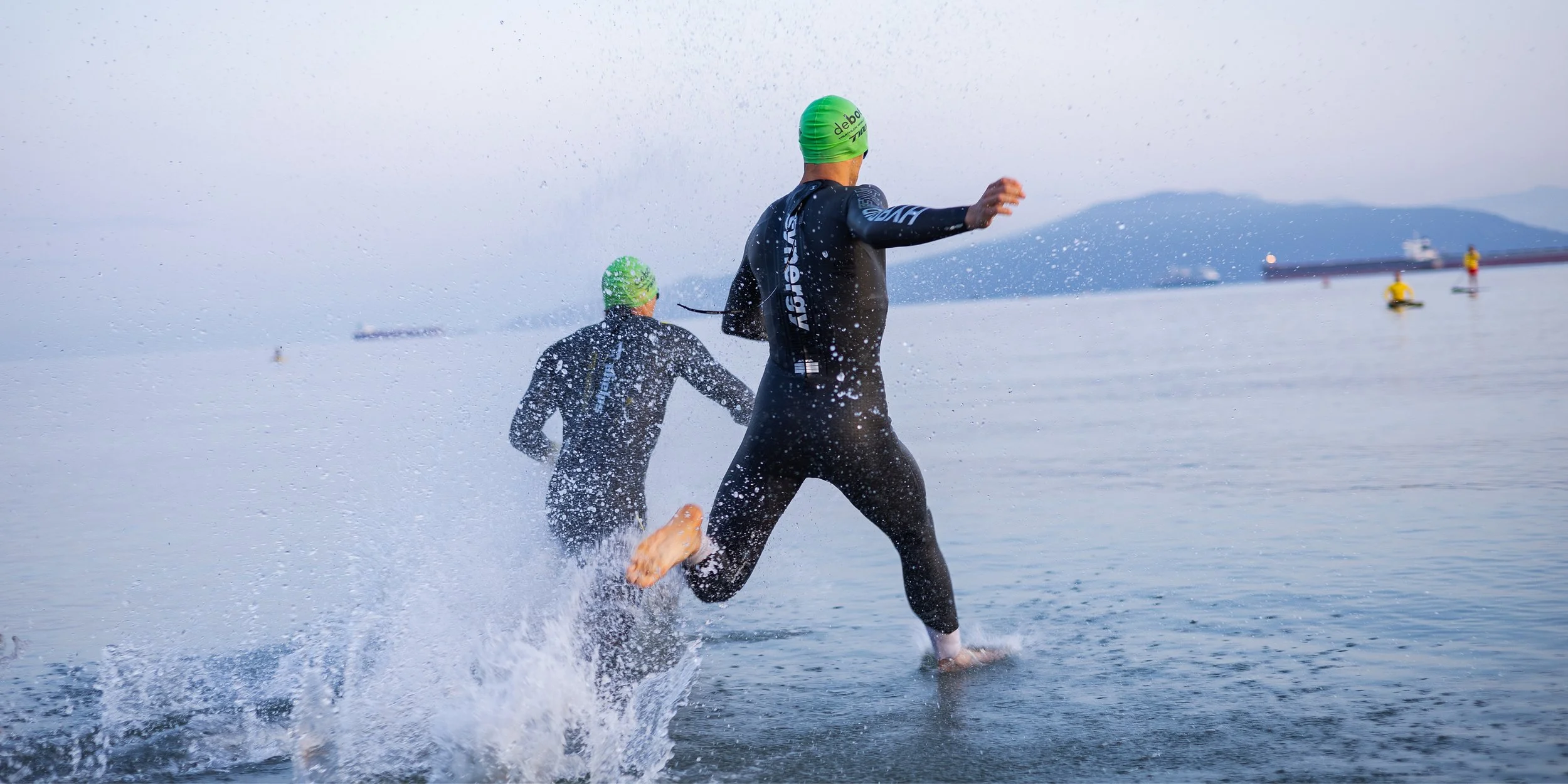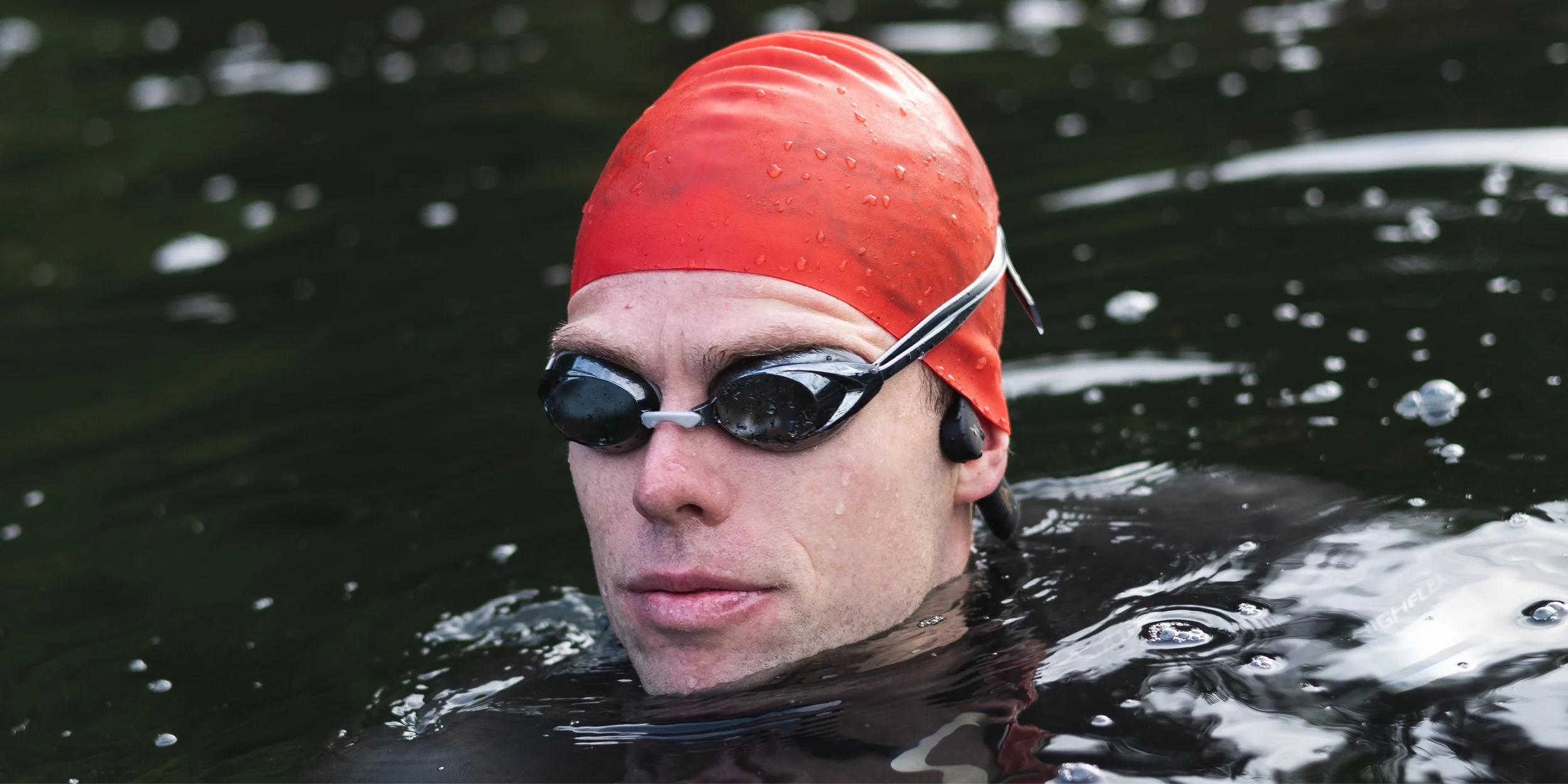Winter Triathlon Training Tips: Preparing and Maintaining Open Water Swimming Skills.
Hummingbird Elite Athlete Trent Thorpe training open water swimming
Making the jump from the controlled environment of the pool to the unpredictable openness of natural water, can feel like entering a new sport altogether. But what if we told you that open water swimming can not only be deeply enjoyable, but play a huge role in your triathlon progression. Here’s how you can utilise winter training to prepare or improve your open water swims.
Quick tip: Implement the skills and insights below with our latest issue of All Things Tri: Swimming Smarter, Not Harder
Hummingbird Elite Athlete Luke Tasker at the 2025 Vancouver T100
Why open water swimming is important
In triathlon, the swim leg may be the shortest in time, but it’s often the hardest in terms of mental and technical challenge, with many finding the swim to be the primary reason they won’t tackle their first triathlon. But this discipline is not something to be feared, but rather recognised as a huge opportunity for anyone. Open water training has some key pro’s for your triathlon journey, including.
Race-day adversity exposure: Becoming familiar with obstacles that may hinder your performance on race day is crucial. Cold water, low visibility, chop, are elements that when you recognise and understand them, remove any possibility of surprises on race day. (If reading these elements spark anxiety alone, you’re in the right place!)
Fitness: No short wall breaks, no feet on the pool floor, energy efficiency and sighting are all examples of open-water skills you can easily become familiar with, that will directly impact your swimming fitness.
Anxiety control: Finding comfort in the chaos, lowering your heart rate, slowly becoming used to your fears over time. These skills are transferable to how you will most likely feel on the start line, either way! You can learn this mindset in open water.
We know if you’re a little nervous about making the jump, then these points above probably didn’t help… But a little exposure to your anxieties is a good thing! Let’s see if we can shift your perspective a little.
Prepare during the winter months.
For those eyeing off the colder months, you’re probably going to be spending some time at your local, indoor heated pool. This is the perfect opportunity to practise some key open water skills to ensure you’re both preparing (or maintaining) the fundamentals to keep you happy and safe in the open water. These skills include:
Sighting: Stay on course and save energy by lifting your head briefly or spotting a target every 5–10 strokes in the pool. It will feel tiring at first, keep movements slow and relaxed. If too challenging, give yourself 1 lap every so often to practice 1 - 2 sights before returning to regular swimming.
Bilateral Breathing & Stable Rotation: Build balance and familiarity to bilateral breathing (Breathing to your left and right) by practicing 3 stroke breathing. This will ensure if you need to spot bouys or avoid someones splashing feet beside you when in open water, you have the confidence knowing you can calmly switch breathing sides.
Treading water: Incorporate some time treading water beside the wall in the deep end of the pool. This will allow you to practice energy efficiency. See if you can extend the duration of time each session, the goal is to be able to tread water comfortably and calmly without a spike in heart rate or anxiety. If your pool is deep enough, you can try to incorporate treading water during your rest periods at the wall.
Hummingbird Elite Athlete Trent Thorpe treading water
Safety tips & how to implement your pool skills
After a few weeks of practice, you’ll find your sighting becomes more natural, and your water treading becomes easier and more comfortable. What does this mean? You’re getting fitter. Let’s dive into transitioning into open water.
Scout a Gentle Location: A calm lake, a sheltered bay, or wide river with gentle current is ideal for a first swim. Some outdoor swimming locations have a lifeguard on duty, when possible always swim under their supervision.
Do not swim alone: When entering the open water, whether you’re familiar with location or the conditions appear safe, always swim with someone who has experience or can watch you from dry land. Never swim alone in open water.
Try a Wetsuit If Possible: Wetsuits add buoyancy and warmth but change your feel in the water. Practice swimming in one beforehand, you’ll be surprised how much more you will float than without one! We recommend the Synergy Hybrid EFX4. Check out our extensive review, here.
Use Proper Goggles & Visibility Gear: Always ensure you’re wearing goggles with the appropriate tint or lens for conditions and bright swim cap so you are visible. A clear lens pair of goggles can ensure maximum visibilty in sometimes poor-visibility conditions.
Check Local Conditions: Wind, waves, currents, temperature. Don’t assume open water is like the pool. For beginners, check weather forecasts like wind (or swell for ocean swimmers) to ensure conditions are on you side when starting out.
Safety First: Again, swim with a buddy or group; know where the exit points are; bring a float or buoy, prepare with warm clothes and a towel afterward and always swim with a lifeguard present when possible.
These are guidelines for you open water journey, although approachable when prepared and done correctly, it is important to understand open water presents more risks than pool swimming. Start slow and progess over time.
Bonus Beginner Tip #1: Many lakes provide shallow banks and beachs. For beginners, enter the water to a depth you can stand and get a feel for your surroundings. Swim alongside the beach so the depth doesn’t change, practice keeping your head under.
Bonus Beginner Tip #2: If the thought of putting your head under open-water is challenging, uncomfortable or scary, practise swimming with your head position slightly more foward facing. Sight you eyes closer to the surface so that you can see you hands entering the water (While still below the surface). Not only will this make sighting less of a challenging movement, but it will give you soemthing to set your focus on (Your hands and strokes). Some have said this point-of-focus even helps in the disorientation that can come with losing the black line to focus on. The best part, You can practice this position in the pool during winter!
Hummingbird Elite Athlete Luke Tasker training open water swimming
The mental game: confidence & calm
A lot of open water discomfort comes from the unknown. Building mental strategies helps:
Visualize what your first swim will be like: entry, sighting, breathing, finishing.
Remind yourself that everyone has a first one, mistakes and awkwardness are normal, so stay safe do not rush.
Breathing techniques will help your overall fitness and confidence, improving your triathlon overall.
Limitations are real and present. Start slow and enjoy the process of improving.
Celebrate small benchmarks: first sighting, first calm long swim, first good exit, etc, you’ve got it.
Final Thoughts
If you commit to a slowly but surely, well prepared transition from the pool to open water, your first open water swim won’t just be a hurdle, it’ll be a milestone. Before you know it open water swims will be a pillar in your fitness and training. Every milestone leans you further into being a stronger, more resilient triathlete. Stay warm though!
Want more tips and guidance?
As a Hummingbird Community Team member, you’ll have access to more exclusive content, Discounts on leading brands like BiSaddle and monthly online calls with our Elite Team athletes where you can as many questions as you like! Still not enough? Become part of a strong, growing community of like minded individuals like yourself.
Meet those with similar questions and struggles in their triathlon journey, as a Hummingbird member, you’ll have be taking the next step in your triathlon journey.
Learn more, here.





